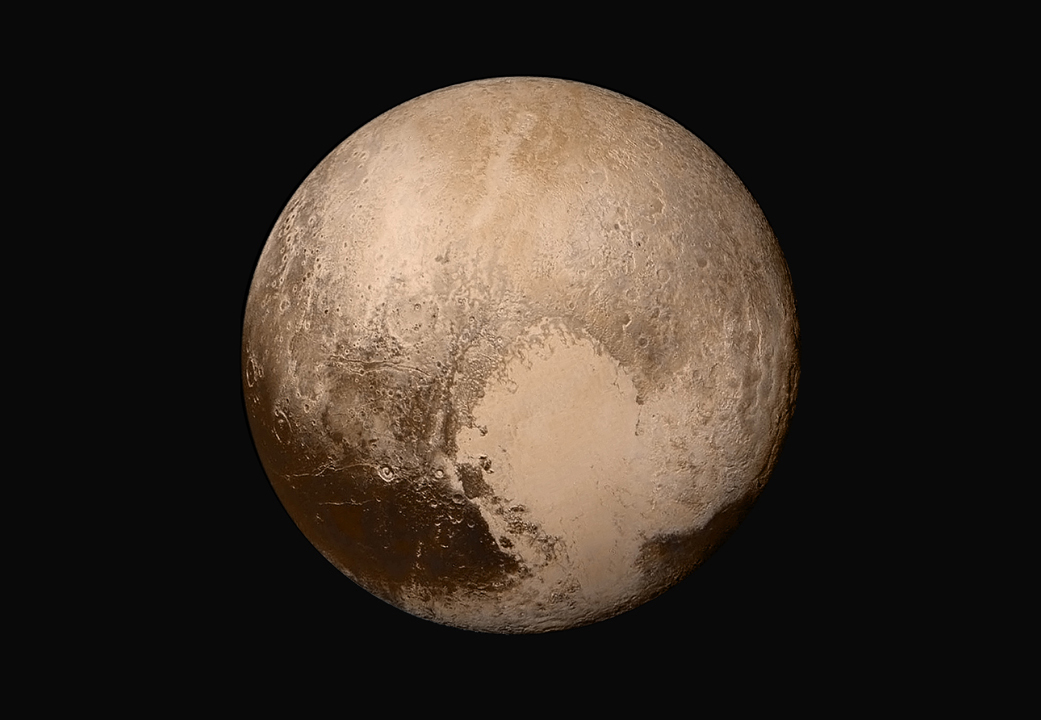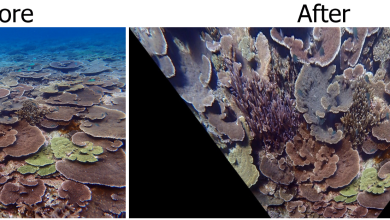Getting to the heart of New Horizons Pluto
If you’re walking along the beach and something glints in the sunlight, attracting your attention, you’ll bend down and pick it up (after making sure it does not sting or bite of course) and you look at it to inspect it more closely. You try looking at it from different angles, wondering about its shape and color and what’s inside it. Well, what if something intrigued you much more, but it were billions of kilometers away?

New Horizons Pluto
So far away that images from the Hubble Space Telescope showed it, at best, to be a fuzzy dot. So, the next best thing to bringing Pluto closer is to take our instruments near it. Launched on January 19, 2006, the New Horizons space probe did just that, it flew 12,500 kilometers above the surface of Pluto on July 14, 2015 at its closest approach. Located 30-49 Astronomical Units (1 Astronomical Unit equals the average Earth-Sun distance) from the Sun, Pluto has been too far away for Earth-based observatories to study it in much detail. To better understand the geology, atmospheric structure and composition as well as changes within the same, it becomes necessary to study it as closely as possible.
The stunning images captured by New Horizons reveal many features on Pluto’s surface, while also providing clues to some subsurface processes. Yet, they raise many new questions too which are extremely exciting for planetary scientists. Dr Ragozzine, our local Pluto expert, presented a colloquium titled “The Pluto system, The Haumea system, and Beyond” on Friday, September 18, 2015 and I’ve summarized some of the major topics related to Pluto covered in his talk.

Above is an incredible, high resolution image which shows distinct geological features and variations in color. The image has been enhanced to bring out the contrast in the colors but the fact that there are variations is awesome as it is. The ‘heart’ of Pluto is actually not uniform throughout. Upon closer inspection, a difference can be distinguished between the two halves of the region. To explore what causes that is just the beginning of an exciting journey for a researcher.
Craters and plains
Heavily cratered surfaces are typically very old and are not geologically active. That’s because the craters formed do not get weathered by atmospheric or fluvial processes and new impacts keep forming new craters on the older ones. Pluto has huge plains, the informally named Sputnik Planum being one of the very widely known ones. It forms one half of the ‘heart’ of Pluto. It’s surprisingly smooth, indicating atmospheric and/or surface activity.

Atmopsheric Layers
This image shows layers in the atmosphere of Pluto. There’s definitely a lot to learn about it’s climatic cycles and weather patterns.

Ice Mountains and Nitrogen Glaciers
The Sun is nearly on Pluto’s horizon in this image. The low angle of incidence of the Sun’s rays on the mountains highlights their peaks’ shapes in the long shadows that are formed. We can see that the mountains are jagged and have sharp peaks. Weathering plays a major role in forming such peaks, which means that it’s very likely that some kind of atmospheric processes do occur on Pluto! Also, the mountains are made of water ice. The extremely cold temperature makes water ice behave on Pluto the way rock does on Earth. And the flow patterns are made by nitrogen glaciers. And there could be convection cells underneath them. And it keeps getting better…

Charon’s ‘Mountain in a Moat’
Charon, the largest of Pluto’s five moons, has a cratered surface, but what’s intriguing is the ‘mountain in a moat’. If an impact brought the ‘mountain’ on Charon, why did it not form an impact crater like the ones nearby? Could it be due to some geological process on Pluto? Why do we not see signs of subduction? It’s weird, but that’s what makes science so interesting, for it could teach us something new!

This new image of an area on Pluto’s largest moon Charon has a captivating feature—a depression with a peak in the middle, shown here in the upper left corner of the inset. The rectangle superimposed on the global view of Charon shows the approximate location of this close-up view. NASA/JHUAPL/SwRI
And there’s much more to come…
The coming months are going to bring more and more data. New data always brings in more questions than it answers and I cannot even begin to imagine all the wonderful science that it would lead to. On a concluding note, here’s a video that presents our images of Pluto from the time of it’s discovery in 1930 until the day we flew by it at a closest distance of less than the diameter of Earth. As you watch, admire the ingenuity of the human brain and the hard work of thousands of individuals that bring the Universe closer as we attempt to make sense of it.





